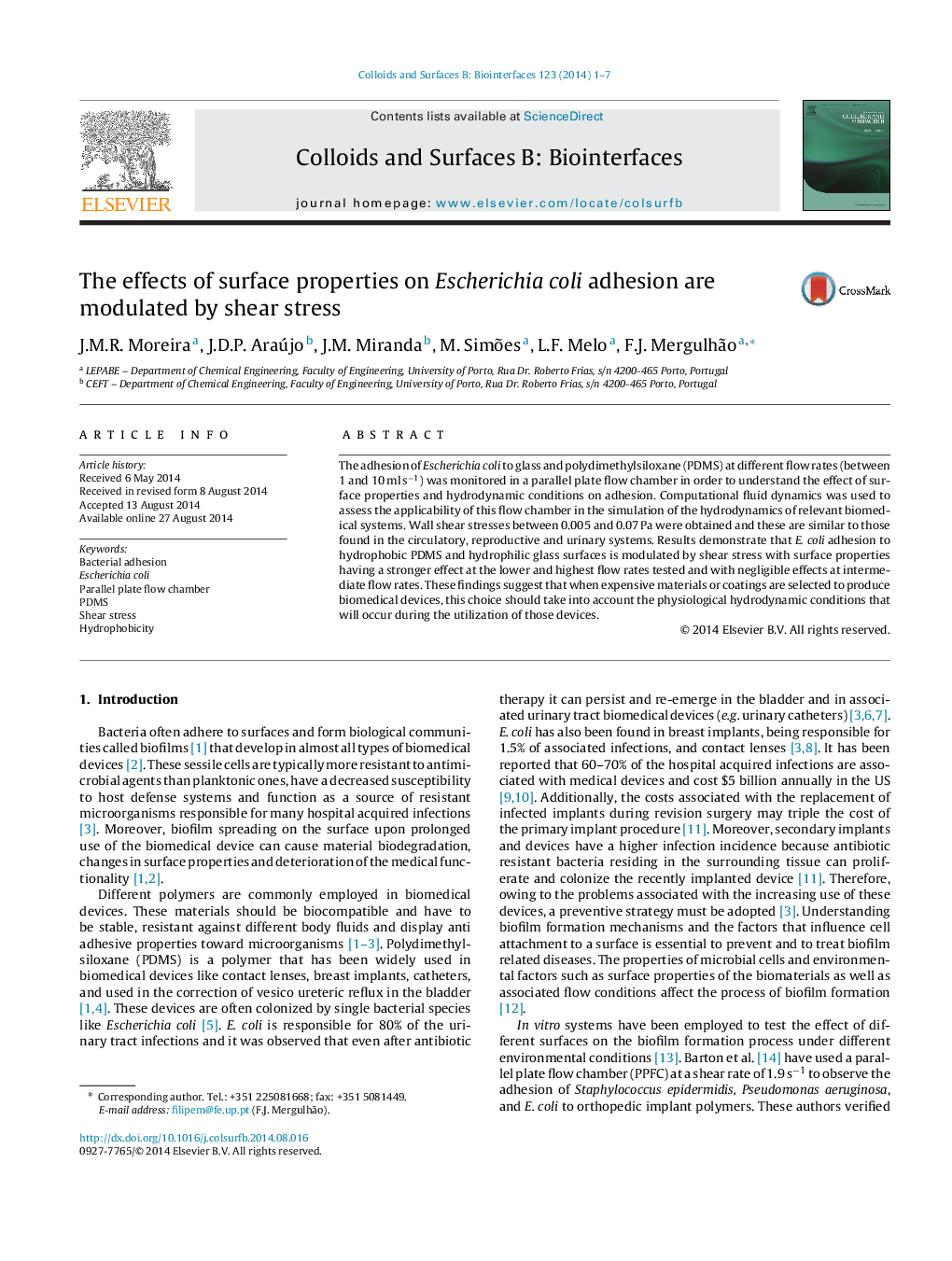| Article ID | Journal | Published Year | Pages | File Type |
|---|---|---|---|---|
| 599460 | Colloids and Surfaces B: Biointerfaces | 2014 | 7 Pages |
•Study of the combined effects of surface properties and hydrodynamics on adhesion.•Escherichia coli adhesion was evaluated using a parallel plate flow chamber.•Surface properties only affected adhesion at the lowest and highest shear stresses.•Material selection for biomedical devices should take into account local hydrodynamics.•This PPFC enables simulation of shear stress found in circulatory and urinary systems.
The adhesion of Escherichia coli to glass and polydimethylsiloxane (PDMS) at different flow rates (between 1 and 10 ml s−1) was monitored in a parallel plate flow chamber in order to understand the effect of surface properties and hydrodynamic conditions on adhesion. Computational fluid dynamics was used to assess the applicability of this flow chamber in the simulation of the hydrodynamics of relevant biomedical systems. Wall shear stresses between 0.005 and 0.07 Pa were obtained and these are similar to those found in the circulatory, reproductive and urinary systems. Results demonstrate that E. coli adhesion to hydrophobic PDMS and hydrophilic glass surfaces is modulated by shear stress with surface properties having a stronger effect at the lower and highest flow rates tested and with negligible effects at intermediate flow rates. These findings suggest that when expensive materials or coatings are selected to produce biomedical devices, this choice should take into account the physiological hydrodynamic conditions that will occur during the utilization of those devices.
Graphical abstractFigure optionsDownload full-size imageDownload as PowerPoint slide
